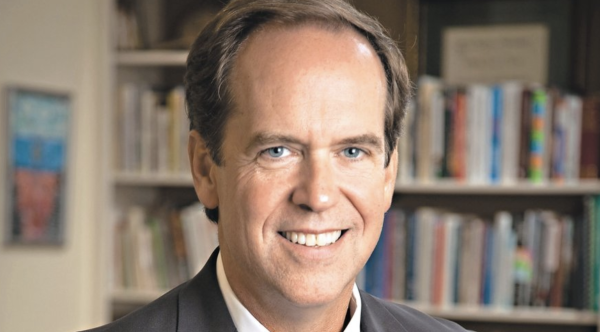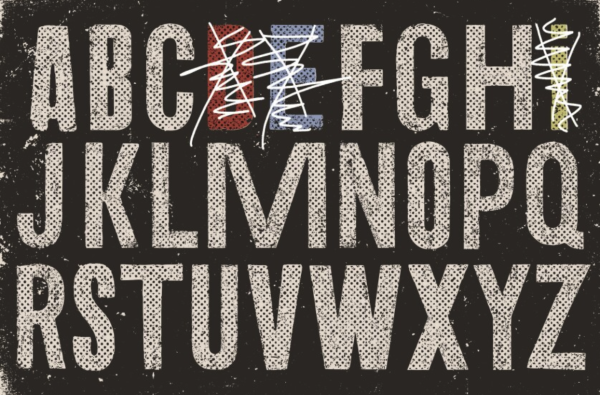Graduation robe changes mark Westminster history
As the Class of 2022 graduates next spring, they will represent a monumental change in Westminster history. This class will be the first to all wear uniform dark green graduation caps and gowns and the first to be represented in the student government by co-chairs of any gender.
The first graduating classes in the Upper School were dressed in white dresses and white dinner jackets on graduation day. In 1958, the uniform transitioned to boys in black robes and girls in white robes. The differing graduation attire originates from the divide between Westminster’s boys’ and girls’ schools.
“The two colored robes emerged in this tradition of Westminster having two schools; Campbell Hall was the boy’s school, and Askew Hall was the girl’s school,” said interim head of Upper School Chanley Small. “The students would walk into graduation having taken different classes and with somewhat different educational experiences. In fact, with the Westminster Schools, we still have a remnant of that on our name with the ‘s.’”
With its long history and many traditions, Westminster constantly changes its practices and systems.
“In the eighties, we went to coed classes, but there were other things that didn’t go coed, like advisory groups or ceremonies like graduation,” said president Keith Evans. “Traditions and ceremonies in schools change and evolve all the time; sometimes, people don’t notice that they change and evolve. Something like graduation robes is more visible.”
Despite the merging of the schools, the robes continued to be in different colors until this year, when the administration decided that a single-colored robe would best fit the culture of Westminster.
“Since I came when Westminster was a boy’s school and a girl’s school, it has constantly been evolving towards being a school that recognizes and validates variety and diversity,” said English teacher Frank Finsthwait. “Graduation is a time where you celebrate a certain kind of unity of a common academic experience everybody has gone through, so I’m all for the idea of blending everyone together in a green robe in that situation.”
The idea of eradicating the two robe colors emerged several years ago when senior girls requested a single colored robe for the class. The administration considered this idea, but various factors prevented the change from happening until now.
“The conversation has been going on for probably four years, maybe longer. We’ve had students, girls in particular, each year that have had an interest in not wearing the white robes anymore,” said Small. “We were going to change it the next year, and somewhere along the way, COVID hit. Then, all we were trying to do was get through the year and not have any big changes that might cause some disruption, so we revisited it again this year.”
As the administration made the decision to change this tradition, they agreed that this graduating class particularly fits the model of a single-colored graduation robe because the Class of 2022 is the first to experience a completely coeducational Upper School experience.
“We went to the coed advisory model, which more closely modeled what we were doing in classrooms and elsewhere,” said Evans. “There’s a little bit of the sense of not wanting to force students into two different colors when really it felt like it did not necessarily reflect the school. This class has been coed in almost every way, so why are we marching separately in different colors instead of demonstrating the unity of the class?”
Additionally, Small went to the senior student government and the class itself and conducted numerous surveys. The class decided on a green robe for the entire student body to wear.
“We all voted that it would be best to get the grade’s opinions first, and it would be better to advocate for the grade rather than just our own opinions. We agreed that uniting the grade as one group is the best move,” said co-chair Stephen Shin. “Especially with LGBTQ and gender fluidity being huge nowadays, it’s hard to fit transgender or nonbinary students into a black or white robe without them feeling uncomfortable.”
Small surveyed the class for their opinions. The opportunity for each student to input their opinion was intended to serve as a further unifying device for the community.
“The feedback we got was never intended to be a vote in the sense that I do not want this to be a divisive factor among the senior class. The whole point of going to a single-colored robe is to have a unified graduation, so those conversations were always intended to inform our decision,” said Small. “What really came out of those conversations is we had a large enough group of girls that did not want to continue to wear white robes and that we were not going to force them to wear white robes.”
In contrast, those who favored remaining in black and white robes value the longevity of the tradition in Westminster history. For many, seeing the white and black robes on graduation day was something they have always been familiar with.
Allie Gryboski, a senior whose brother and cousins graduated in the black and white robes, said, “As I’ve gone through high school, I’ve seen all of them graduate like that, so I’ve always envisioned myself doing the same and looked forward to it. At first, I was upset when they sent the original survey out. I definitely really liked the tradition aspect of it, but the green has grown on me over time.”
Conflicting opinions considered, Finsthwait, who has taught at Westminster for 52 years, believes the unification of the students with a visual manifestation through the graduation robes demonstrates progress in the evolution of Westminster and the direction of its educational choices.
“I know that this is causing anxiety among former Westminster graduates who look back to the way it was, but the way it was academically, socially, and culturally didn’t really match up with the world that students are being prepared for,” said Finsthwait. “It has now become a realistic education in learning the academic materials, but just as important is learning how to process those academic materials with people of different backgrounds than our own.
Administrators believe that the graduation robe changes may be the next step to helping students feel comfortable in their future environments.
“For the most part, there are two choices for robes, either black or the school color,” said Evans. “If you’re going to be part of a broader academic tradition in colleges and universities and other similar schools to ours, that’s kind of how it works.”
The change with the co-chairs to be any gender rather than a representative boy and girl was part of a separate action involving the Southern Association of Independent Schools (SAIS), and decisions made according to the SAIS accreditation process. SAIS accreditation emphasizes improvement and development in independent schools like Westminster and provides goals to do so. A broad goal that the SAIS gave Westminster four years ago was to break barriers around gender among the students, which the Upper School administration then used to handle more specific decisions.
“Things that changed were the grade chairs to be sorted by alphabet, not by gender, so instead of having a grade chair for boys, there’s now a grade chair for last names A-L and a grade chair for M-L,” said dean of students Brooks Batcheller. “The other change was instead of having a dean of boys and a dean of girls; we now have a dean of students and dean of student life.”
Once these changes were implemented toward the objective, the most recent change of removing the restrictive gender policies on the co-chairs followed smoothly.
“This class was a group that had been coed by advisement all the way through the Upper School in a way that the school hadn’t seen before,” said Batcheller. “With that then, their class officers from freshman year on had not been a mandatory three male, three female. It had been the top vote-getters as president and vice president, so it made sense that the co-chair would be the same way.”
There is no set plan regarding other possible changes moving forward, but it is something that the administration assesses annually.
“This is something that each year we’re trying to get a little bit better because we just want a school where everyone feels included, feels like they belong, and most importantly, is in a position where they can perform their best academically in the classroom, on the stage, everywhere,” said Batcheller.
Despite this class being the first for breaking several gender-based traditions, remaining traditions like the gender-separated valedictorian and salutatorian positions are among those that have not been changed.
“The purpose of some of these tweaks was to be more inclusive and more about the class as a whole,” said director of operations and communications Tiffany Boozer. “We feel very strongly that we have some amazing students, and to be able to offer an opportunity to have two valedictorians and two salutatorians feels far more inclusive to us. That’s what we’ve always done, and that’s what we’ll continue to do.”
Additionally, if such changes were to be made, they would not be implemented for this graduating class.
“We did absolutely discuss the valedictorian and salutatorian. If we’re ever going to make any changes, we implement them years in advance so as students advance through the Upper School, it is in place already, because their GPA is a cumulation from the beginning of ninth grade,” said Boozer.




